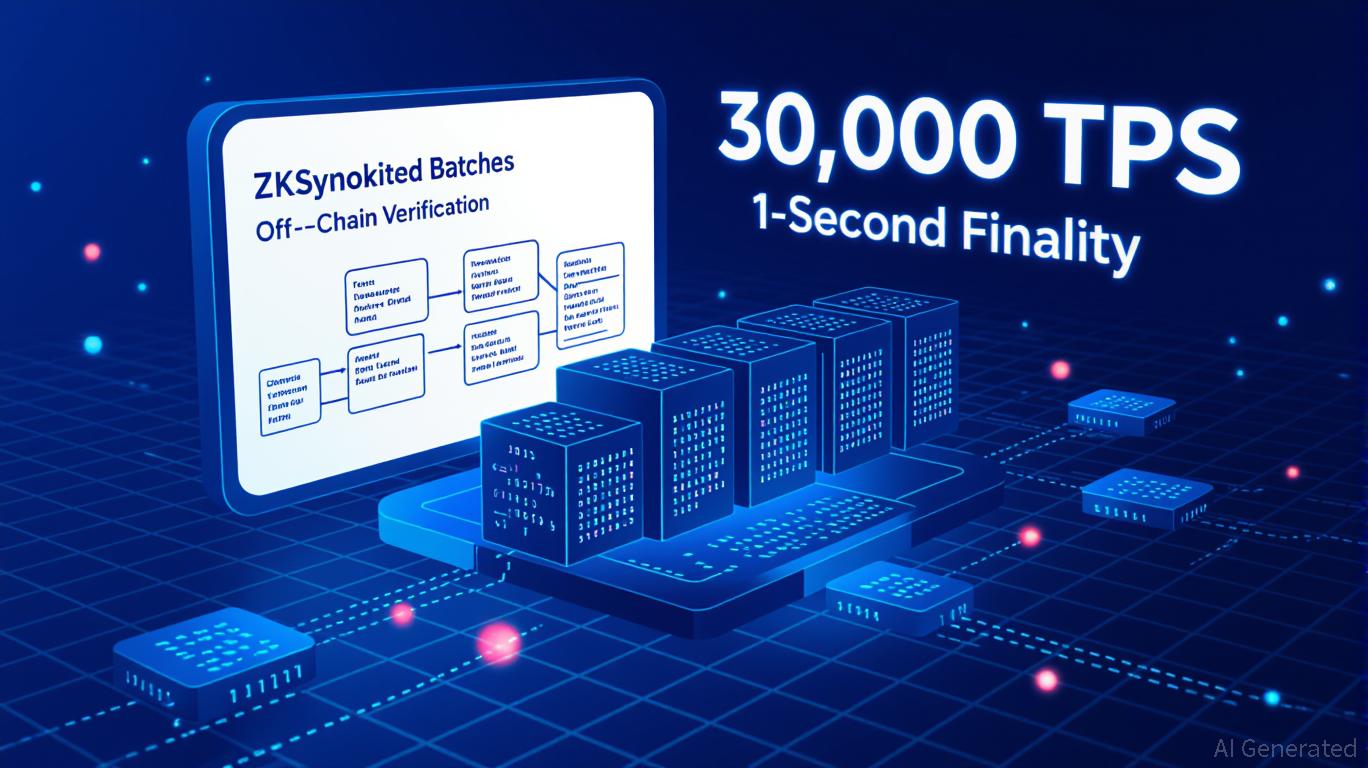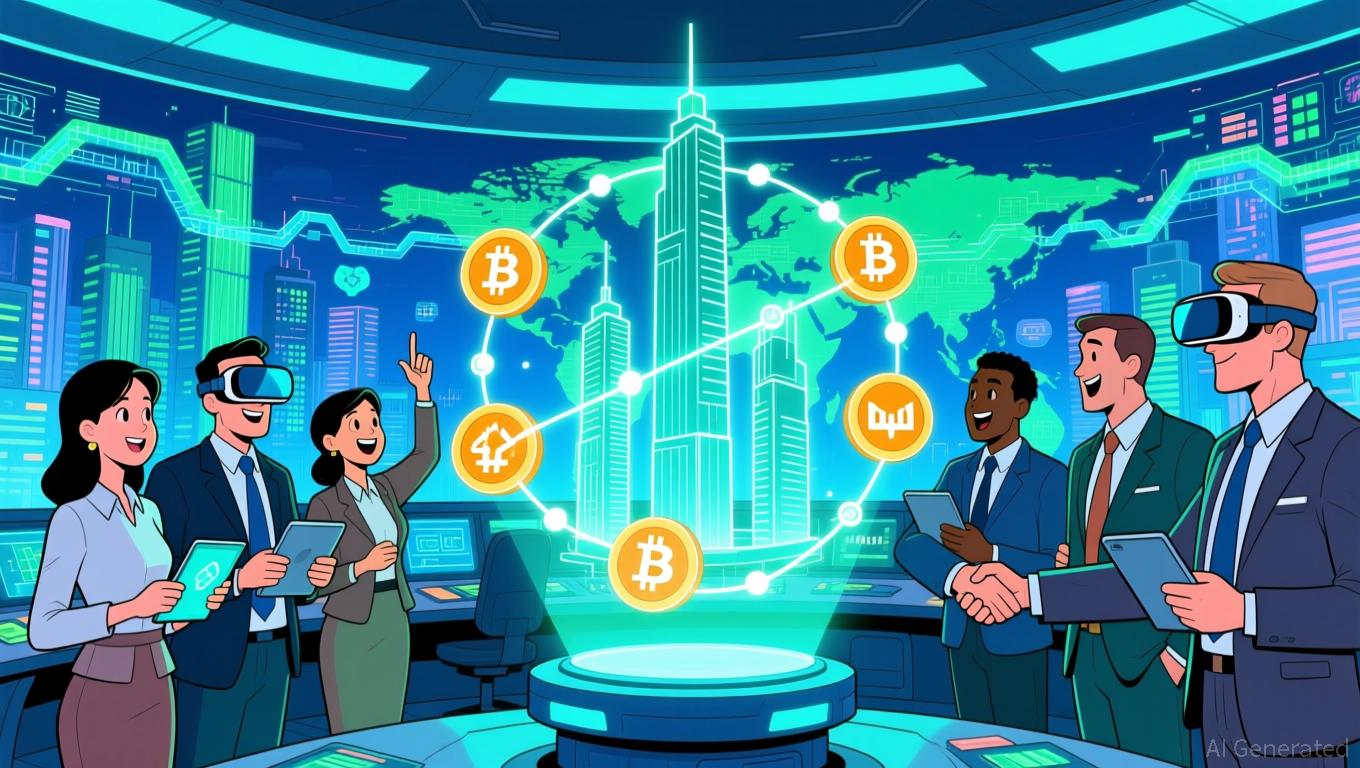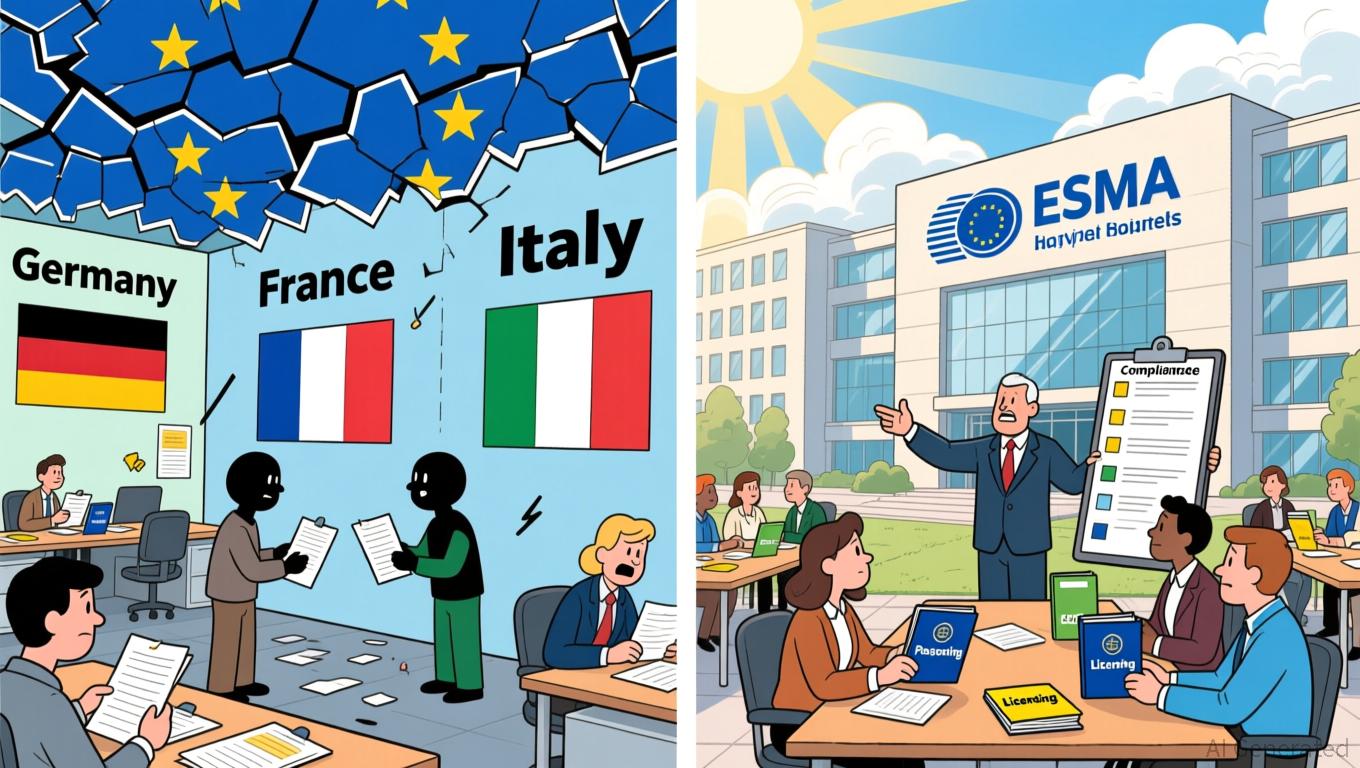Vitalik Buterin Supports ZKsync: What This Means for Layer 2 Scaling
- Vitalik Buterin endorses ZKsync, highlighting its ZK-rollup tech as critical for Ethereum's scalability and decentralization goals. - ZKsync's Atlas upgrade achieves 30,000 TPS with 1-second finality, enhancing programmability while maintaining on-chain security. - The project faces competition from Arbitrum and Optimism but differentiates through privacy, low fees, and Ethereum compatibility. - Rigorous audits and emergency response protocols strengthen ZKsync's security, though real-world performance r
Vitalik Buterin’s Support: Strategic Importance
Vitalik Buterin has repeatedly highlighted incorruptibility as Ethereum’s core attribute, guaranteeing data security and trust without relying on central authorities, as noted in a
ZKsync utilizes zero-knowledge (ZK) rollups to process transactions off-chain while preserving the security of the main chain. The latest Atlas upgrade has increased its throughput to 30,000 transactions per second (TPS) with 1-second finality, marking a significant efficiency improvement, according to Coinotag. Buterin’s support also includes advocating for the removal of Ethereum’s modexp precompile, an outdated feature that can increase the computational cost of ZK proofs by as much as 50 times, as detailed in a

Technical Strengths and Market Differentiation
ZKsync’s development roadmap places it as a strong competitor in the L2 sector of Ethereum. The Atlas upgrade not only accelerates transaction processing but also improves programmability, allowing advanced smart contracts and dApps to function with minimal delay, as reported by Coinotag. By the fourth quarter of 2025, ZKsync had handled 1.2 billion transactions, reflecting its reliability and growing adoption, according to Coinotag.
Nevertheless, ZKsync contends with major rivals such as
Security and Governance: Building Trust
Security remains paramount for any blockchain initiative. In 2025, ZKsync underwent comprehensive audits, including assessments by Spearbit and OpenZeppelin, as referenced in ZKsync’s documentation. The ZKsync Security Council (ZKSC) has shown responsiveness, recovering from the April 2025 airdrop incident and executing emergency updates, as reported by the ZKsync Security Council. These actions, along with a revised funding structure that prioritizes swift interventions, highlight the project’s dedication to strong governance, as outlined in the ZKsync Security Council report.
However, investors should exercise caution. While ZKsync’s technical achievements are notable, its ability to maintain performance under real-world pressures—such as heavy transaction loads or malicious attacks—will ultimately determine its sustainability, according to Coinotag.
Investment Outlook: Weighing Progress and Uncertainty
ZKsync’s investment prospects are rooted in its alignment with Ethereum’s scaling objectives and its technological progress. With Buterin’s endorsement and the Atlas upgrade, ZKsync has emerged as a prominent contender in the L2 “arms race.” Nonetheless, its future depends on several key factors:
1. Adoption Levels: Broad uptake by developers and users is essential. The 1.2 billion transactions processed by ZKsync indicate momentum, but rivals are also innovating, as noted by Coinotag and TokenMetrics.
2. Regulatory Environment: As L2s manage increasing value, regulatory developments could shape their growth.
3. Ethereum Enhancements: Planned changes such as the removal of modexp and other EIPs will have a direct impact on ZKsync’s efficiency, as mentioned in the Coinotag article.
From a risk and reward standpoint, ZKsync presents significant potential if it can secure a leading role in Ethereum’s L2 space. However, its dependence on Ethereum’s development path and the unpredictable nature of crypto markets call for a cautious approach.
Conclusion: Will ZKsync Shape Ethereum’s Next Era?
Vitalik Buterin’s backing of ZKsync goes beyond simple approval—it signals a strategic belief in ZK-rollups as the future of Ethereum’s scalability. Thanks to its technical progress, strong security measures, and alignment with Ethereum’s vision, ZKsync is well-placed to gain substantial market share. Still, investors must consider its prospects in light of intense competition and shifting regulations. For those willing to embrace innovation-driven risk with a long-term perspective, ZKsync stands out as a noteworthy example of blockchain’s coming evolution.
Disclaimer: The content of this article solely reflects the author's opinion and does not represent the platform in any capacity. This article is not intended to serve as a reference for making investment decisions.
You may also like
Ethereum Updates: BitMine’s Fresh Leadership Fuels Ethereum Growth, Striving to Connect Wall Street with the Crypto World
- BitMine appoints Chi Tsang as CEO amid strategic overhaul, adding 3 board members to strengthen governance. - Company boosts ETH holdings by 34% to $12.5B, aiming to control 5% of Ethereum's supply through aggressive accumulation. - Institutional Ethereum buying accelerates as exchange balances hit multi-year lows, with BitMine trailing only Bitcoin-focused rivals. - Despite 35% stock decline and 13.4% ETH price drop, $398M cash reserves signal long-term blockchain asset tokenization bets.

Democratizing Access to Private Markets: How AI and Tokenization Are Transforming Global Finance
- IPO Genie tokenizes pre-IPO assets via AI, bridging traditional finance and blockchain with $500M+ AUM. - BlackRock's BUIDL fund expands to BNB Chain, reaching $2.3B market cap as institutional confidence grows. - Tokenization reduces cross-border costs and democratizes access to $3T private markets via retail investor participation. - IPO Genie's presale sees $0.05 price projections, DAO governance, and Fireblocks/CertiK security partnerships. - Nebraska's digital asset bank charter highlights evolving

Altcoin Enthusiasm Meets Federal Reserve Prudence: DeFi Faces a Critical Turning Point
- Crypto market shows Altcoin Season optimism with DeFi growth, high-yield products like CoinW's 50% APY offering, and rising altcoin valuations. - Ethereum-based DeFi project secures $18.7M in presale, nearing 18,000 token holders, with 250% MUTM token price surge signaling confidence. - Fed's potential 2025 rate cut pause and inflation risks could disrupt altcoin momentum, per J.P. Morgan analysts, amid 58% priced-in December cut probability. - UK cashback program integrating crypto rewards highlights ma

EU Crypto Regulations Struggle to Balance Centralized Oversight with Regional Knowledge
- EU Commission proposes centralizing crypto oversight under ESMA, replacing MiCA's national regulator model and sparking industry concerns over legal uncertainty and implementation delays. - Critics warn centralized control risks destabilizing MiCA's 2026 rollout, with national regulators arguing they maintain closer firm engagement and ESMA requiring significant resource boosts. - France and ESMA Chair Verena Ross support centralization for regulatory consistency, but timing concerns persist as national
